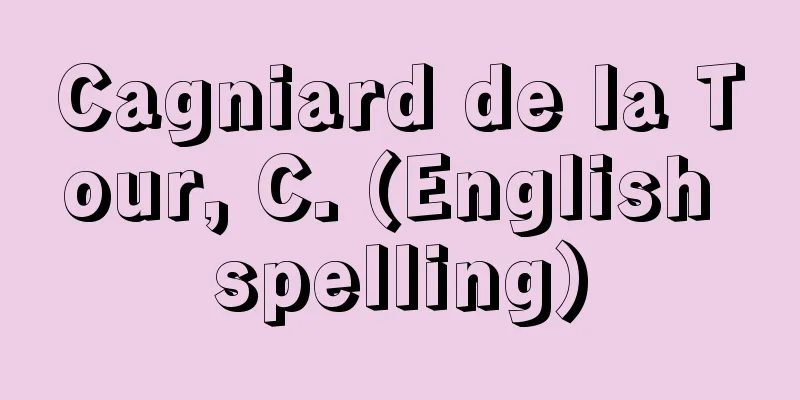Indirect criminal

|
Using another person as a tool to commit one's own crime. Under special circumstances, such a crime can be realized. For example, a doctor who has an unwitting nurse inject a poison-laced injection into a patient with the intention of poisoning the patient is an example of this. Direct and indirect principals are opposing concepts. An indirect principal commits a crime by using the actions of another person, whereas a direct principal commits a crime directly. In addition, indirect principals are distinguished from accomplices in the narrow sense of aiding others in the commission of a crime, that is, instigators and accomplices (there is also a view that rejects indirect principals and interprets them as accomplices). Therefore, what is an indirect principal, and how to distinguish it from direct principals and accomplices in particular, must be examined in terms of the theoretical issues of what a principal is and how to distinguish between principals and accomplices. In addition, some crimes, such as perjury (Article 169 of the Penal Code), require a direct act by the principal offender, and are called self-inflicted crimes. In general, indirect criminal liability cannot be recognized for self-inflicted crimes. [Tetsuro Nawa] Requirements for indirect criminal liabilityFor indirect criminal liability to exist, two issues must be considered: first, in what circumstances can a human being become a tool (instrumentality), and second, can the act of using another person as a tool be a principal offense (principal offense). The second point requires individual consideration for each type of crime, so here we will consider the first point. (1) A type of exploitation of the physical activity of another person that cannot be considered an act under the Criminal Code. For example, exploitation of a person who is completely unable to distinguish between right and wrong, such as a small child or a person with a severe mental illness, or physical or psychological coercion to make another person perform a physical act falls under this category. (2) Using the acts of others that do not meet the constituent elements of a crime. For example, this type of crime involves using the purpose of a crime involving a certain purpose, or using the acts of others that lack the status of a crime involving a certain status, when there is no intent to commit a crime that meets the constituent elements of a crime. (3) The type where the act of another person is used when the constituent elements of the crime are met but the act is not illegal. For example, this type of crime involves the use of another person's act that is not illegal due to self-defense or emergency evacuation. (4) A type where the act of another person who is illegal but lacks responsibility is used. This is the case where the act of another person who is not responsible or has no possibility of expectation is used. However, on this point, from the standpoint of the extreme dependency theory (the theory that the principal must have committed an illegal and culpable act that meets the constituent elements for complicity, as was the prevailing theory and precedent in the past), there was a view that denied the existence of complicity and interpreted it as indirect principal. However, since then, as the limited dependency theory (the theory that the principal must have committed an illegal act that meets the constituent elements for complicity to be established) has become dominant, it has become possible to establish complicity in such cases, so it is necessary to determine whether it is complicity or indirect principal depending on the specific case. For example, if a parent orders their child under the age of 14 to steal, this can be considered as instigation, but if they psychologically coerce the child or take advantage of a child under the age of 10, this can be considered as indirect principal (or joint principal) (precedent). [Tetsuro Nawa] [Reference items] | | | |Source: Shogakukan Encyclopedia Nipponica About Encyclopedia Nipponica Information | Legend |
|
他人を道具のように利用して自らの犯罪を実行すること。特別の事情のもとでは、このような犯罪の実現が可能となる。たとえば、医師が、患者を毒殺する目的で、事情を知らない看護師に対して、毒薬を混入した注射液を患者に注射させる場合がこれにあたる。直接正犯と間接正犯は対概念である。間接正犯が他人の行為を利用して犯罪を実行するのに対し、直接正犯は行為者自身が直接的に犯罪を実行する場合である。また、間接正犯が自らの犯罪を実行する点において、他人が犯罪を実行するにあたってこれに加担する狭義の共犯、すなわち教唆犯と従犯(幇助犯(ほうじょはん))と区別される(なお、間接正犯を否定し、共犯と解する見解がある)。そこで、間接正犯とは何か、とくに直接正犯や共犯とどのように区別するかは、正犯とは何か、また、正犯と共犯をいかに区別するかという理論的な問題の検討をまたなければならない。なお、犯罪によっては、偽証罪(刑法169条)のように、正犯者自身による直接の行為を要するものがあり、これを自手犯という。自手犯には一般的に間接正犯を認めることはできない。 [名和鐵郎] 間接正犯の要件間接正犯が成立するためには、第一に、人間はいかなる場合に道具となりうるか(道具性)、第二に、他人を道具として利用する行為が正犯たりうるか(正犯性)、の2点が問題となる。このうち第二点については犯罪類型ごとに個別的な検討を要するので、ここでは第一点について検討する。 (1) 刑法上およそ行為とはいえないような他人の身体活動を利用する類型。たとえば、幼児や高度の精神病者のように善悪の判断がまったくできない者を利用する場合、他人に対して物理的または心理的な強制を加えて身体活動を行わせる場合がこれにあたる。 (2)構成要件該当性を欠く他人の行為を利用する類型。たとえば、構成要件的故意を有しない場合、目的犯における目的や身分犯における身分を欠く他人の行為を利用する場合がこれにあたる。 (3)構成要件には該当するが違法性を欠く他人の行為を利用する類型。たとえば、正当防衛、緊急避難により違法性阻却となる他人の行為を利用する場合がこれにあたる。 (4)構成要件に該当し違法性もあるが、責任が欠ける他人の行為を利用する類型。責任能力や期待可能性がない他人の行為を利用する場合がこれである。ただし、この点について、極端従属性説(かつての通説・判例のように、共犯の成立には、正犯に構成要件に該当する違法で有責な行為が必要とする説)の立場から、共犯の成立を否定し、間接正犯と解する見解があった。しかし、その後、制限従属性説(共犯の成立には、正犯に構成要件に該当する違法な行為があれば足りるとする説)が支配的となるなかで、このような場合に共犯の成立が可能となったため、具体的事案によって、共犯か間接正犯かを判断する必要がある。たとえば、親が14歳未満のわが子に窃盗を命じる場合は教唆犯にあたりうるが、たとえば心理的に強制したり、10歳にも満たない子供を利用する場合には間接正犯(または共同正犯)にあたりうる(判例)。 [名和鐵郎] [参照項目] | | | |出典 小学館 日本大百科全書(ニッポニカ)日本大百科全書(ニッポニカ)について 情報 | 凡例 |
Recommend
Naomasa Harada
?-1576 A military commander from the Sengoku to O...
basic taste
...The involvement of the peribranchial nucleus i...
Ballarat - Ballarat (English spelling)
A city located in central Victoria, Australia, 11...
Movie exhibition - movie exhibition
...His interests were said to be limited to techn...
Ise Shomon Gate
...A school of haiku. A school of Shomon (Ise Sho...
Kappe
Kappe is a metal beam that supports the roof of a ...
Stereochemistry - Rittaikagaku (English spelling) stereochemistry
A branch of chemistry that studies the spatial ar...
Hierarchical structure (botany) - Plant biology
…In forests, the distribution of leaves in a comm...
Ennosuke Ichikawa
A Kabuki actor. His stage name is Omodakaya. Firs...
Yoshizawa Kengyo
A performer and composer of Ikuta-ryu koto music ...
Cow Thinking - Gyushian
…Prime Minister of the Tang Dynasty in China. Rep...
Akimoto Shitomo - Akimoto Yukitomo
1820-1876 A daimyo in the late Edo period. Born o...
Cupressus macrocarpa (English spelling) Cupressusmacrocarpa
…[Masao Yamashita]. … *Some of the terminology th...
Critical micelle concentration
…When the concentration in a solution exceeds a c...
Brain drain
〘 noun 〙 The act of researchers, engineers, and ot...
![Koshimizu [town] - Koshimizu](/upload/images/67cb940a7731a.webp)





![Toyohashi [city] - Toyohashi](/upload/images/67cc5c643c33d.webp)


